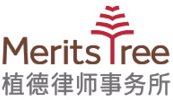The domestic family trust business is diversifying as it matures amid surging demand, favourable regulatory policies and comprehensive upgrading of services. But insurance trusts, fund-based family trusts and other standardised family trusts can no longer meet the demands of high net worth clients with complex needs, making it imperative to customise family trusts that can accommodate various types of property.
For this reason, equity family trusts have begun to attract the attention of a growing number of high-net-worth clients as an important tool for preserving and inheriting family equity assets.
COMMON STRUCTURE

Partner
Merits & Tree Law Offices
At present, mainstream equity family trusts adopt the structure of “fund trust + limited partnership special purpose vehicle (SPV)”. Specifically, the settlor delivers its funds to the trustee to set up a family trust, and the trustee, as a limited partner, sets up a limited partnership with the settlor, or person designated by the settlor, as the general partner. The limited partnership receives the equity of a company held directly or indirectly by the settlor, so that the family trust holds the equity of the company through the limited partnership.
Listed companies, companies planning to be listed, and limited liability companies without listing plans may all design the shareholding structure of an equity family trust. It is worth mentioning that the Shanghai Stock Exchange has for the first time clarified trust shareholding under control in the Review of the Issuance and Listing on Star Market (Issue 1 in 2022), providing clearer guidance for companies to be listed on the Star Market on how to plan a family trust shareholding structure in advance.
In addition to companies to be listed, the settlor of an equity family trust may be either the majority or minority shareholder of a company. In a limited liability company, the settlor – whether majority or minority shareholder – should reach agreement on the family trust shareholding arrangement with other company shareholders in advance.
If the company is listed and the settlor is its actual controller, attention should also be paid to such issues as whether the shares to be put into the family trust are non-tradable, as well as trading methods, concerted action arrangements and information disclosure, and should first fully communicate with the stock exchange on the proposed arrangements.
KEY ISSUES
Tax issues are the most prominent when establishing. In an example where the transferor of the equity is the settlor, the settlor’s transfer of the equity to the limited partnership SPV is a “private equity transfer”, which should conform to relevant provisions of current laws and regulations on individual income tax. The balance of equity transfer proceeds, after deducting the original equity value and reasonable expenses, should be the taxable income, with individual income tax payable based on “property transfer proceeds”.
At present, the transfer of equity held by the settlor to the family trust does not “justify the low transfer price”. Therefore, if there is a large difference between the original investment by the settlor for acquiring the equity and the existing value of the equity, the settlor may face a high tax burden.
To alleviate the tax burden in establishing the equity family trust, practical strategies may be either transferring part of the equity held by the settlor to the limited partnership SPV, or the family trust acquiring part of the company equity by way of capital increase through the limited partnership SPV.
Boundary of trustee’s management responsibility in trust duration is a common concern for both settlor and trustee. Under the structure of “fund trust + limited partnership SPV”, the trustee generally only manages affairs corresponding to the limited partnership shares it holds at the trust level, while the general partner exercises the right to manage the equity.
Although the trustee does not participate in the operation and management of the limited partnership SPV and the company, in order to protect the interests of the family trust the settlor should guarantee the trustee’s full right of information on important matters, and not step over the boundaries agreed upon when the trust is established in important decision-making. As the fiduciary duty provided in the Trust Law is relatively principle-oriented, the trustee should clearly define the scope of fiduciary duty in the equity family trust project, but should not exclude its statutory duty of loyalty.
Disposal and distribution scheme of equity assets on trust termination should be fully designed during establishment. The stability of the trust and the trustee’s discretion to make decisions should both be taken into consideration in setting the termination events. If a major risk or negative public opinion event adversely affects the company, to protect its interests the family trust will withdraw from the company and the trustee will transfer the property share of the limited partnership SPV or the equity of the company it holds to the settlor, or person designated by the settlor.
In extreme cases, if the settlor cannot co-operate in the transfer, the trustee may select to dispose of the equity assets by distributing the property share of the limited partnership SPV to the beneficiary after terminating the trust.
To avoid any obstacles to distribution in the future, the trustee should fully consider all possible situations of withdrawal and distribution when designing the trust settlement documents, and fully communicate with the settlor’s family.
Ouyang Fangfei is a partner at Merits & Tree Law Offices

Merits & Tree Law Offices
5/F, Raffles City Beijing Office Tower
No.1 Dongzhimen South Street
Dongcheng District, Beijing 100007, China
Tel: +86 21 52533501
E-mail: fangfei.ouyang@meritsandtree.com




























